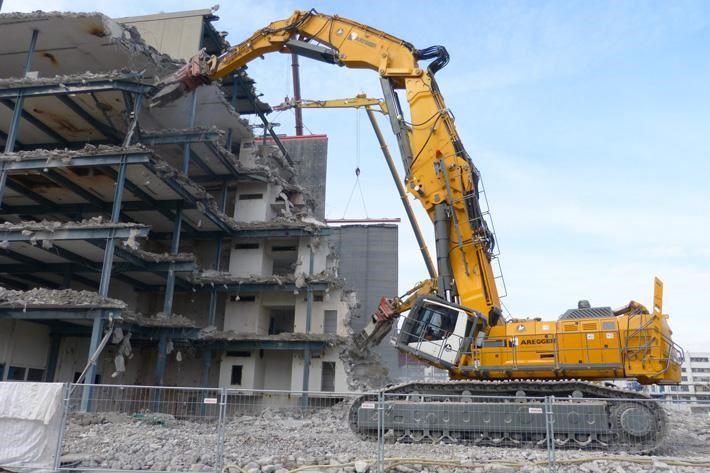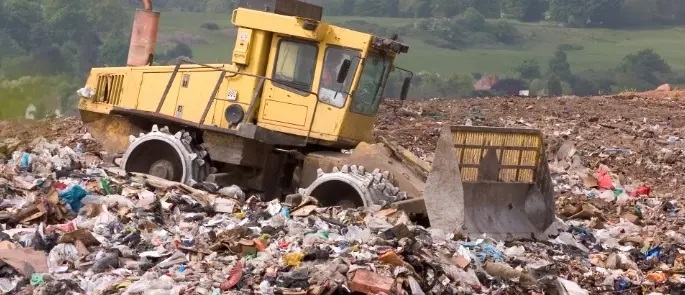Are you renovating your home? Many things must be going on in your mind, like the layout, design, theme, etc. But have you ever thought of renovation waste disposal? If you believe it’s not a big deal, let’s give you some states to change your views. 22% contribution in the total construction and demolition waste comes from home remodeling waste.
Also, 30% of landfill waste comprises construction waste with a major share of home remodeling waste. So, where to dispose of remodeling waste to generate minimum pollution and landfill waste? This article provides a detailed answer. Keep reading!
What is Renovation Waste?
Renovation waste or remodeling waste includes the waste material generated during renovation. Some of these wastes are hazardous. Examples of renovation waste are asphalt, mirrors, mercury & lead, ceramic & porcelain, concrete, bricks, carpets, bathtubs, sinks, drywall, plywood, particle woods, etc.

What are the Different Types of Construction & Remodeling Wastes?
Construction and remodeling wastes can be bifurcated into the following 3 types:-
- Building Materials: It’s the damaged and unused material in a building, for example, wiring, drywall, nails, woods, bricks, etc.
- Demolition Waste: It contains the debris of asbestos (hazardous), glass, metal, tiles, wood, and concrete. The waste management of hazardous material is crucial. The rest of the waste can mostly be reused or recycled.
- Hazardous Waste: The substances containing chemicals like leftover paint and adhesives come under the category of hazardous waste. Asbestos and specially treated woods are also an example of unsafe materials.

What are the Best Ways of Remodeling & Building Waste Disposal?
Here are some of the best ways to save the planet from the massive pile of remodeling and construction waste:-
- Better Planning
You must plan your renovation in such a way that generates minimum waste. Also, the waste which you generate must be primarily of recyclable or reusable material.
- Selling or Donating
Sell some of the old usable stuff which is in good condition. If you don’t need the money from selling, you can give back to society by donating and partnering with habitat. It’s a popular initiative in the U.S. and globally.
- Recycling or Reusing
Find options of recycling or repurposing the waste which is recyclable and reusable. You can get help from organizations actively working towards reducing construction waste, such as AGC, CDRA, BMRA, NDA, etc.
- Renting Roll-off Dumpster
If your renovation project is of a considerable size, get a roll-off dumpster on rent. It comes in the size of 10-40 cubic yards. However, check if you have enough space at your site to park the dumpster or permission to park it on the roadside.
- Purchasing Collapsible Trash Bin
Collapsible trash bins can help for garbage removal of home renovation projects which are not too big. However, you need to buy the bin and pay the pick-up service for collecting the trash.
- Hiring Construction Cleaning Crew
Whether you are renovating a commercial or a residential site, a construction clean-up crew can help you in both cases. They do the dusting after cleaning the debris. They also do shining and polishing of your construction appliances and hardware.
- Storing Valuable Items
You may have items from a few decades away that can turn to be vintage and antique in a few decades. So don’t throw away these valuable items and keep them stored.
- Upcycling
Upcycling refers to the creative reuse of waste material such as DIY face masks, hand-painted pots, repurposed tin cans, plastic bottle planters, repurposed candle jars, etc.
- Using Waste Management Equipment
High-rise buildings don’t have enough space on each floor to collect construction or remodeling waste. Therefore, specialized waste management equipment such as commercial trash compactors and trash chutes work best for high-rise buildings.
How to Dispose of Demolition Waste & Other Waste According to the Material?
Sorting waste according to the material is another way of efficient and quick construction, demolition, and renovation waste disposal. Learn how to do it here!
- Brick Disposal
You can either rent a roll-off dumpster or a truck to dispose of bricks. Another way is to hire a local junk removal company to clean the place, including removing all the bricks.
- Concrete Disposal
You can give concrete for reuse to building supply companies. It can also be sent for recycling with the help of skip bin hire services, or you can hire a truck to clear the place of concrete.

- Untreated Wood Products Disposal
Untreated wood such as plywood and medium-density fibreboard (MDF) goes into landfills. You may need a hauler to carry these materials to the center.
- Hazardous Construction Waste Disposal
Here’s how you handle hazardous building waste disposal!
- C&D Waste Containing Mercury
Don’t crush these items, and don’t try to take the mercury out. Label them for separate disposal in consolidation site or mercury recycler. Emergency lights, fluorescent lamps, thermometers, and smoke detectors are some examples of mercury-containing items.
- C&D Waste Containing Lead
Paint is the most prominent lead-based waste on a construction or renovation site. You can collect lead-based paint debris separately and consult a local solid waste agency about how to dispose of this waste.
- Asbestos
Asbestos waste is of 2 types: regulated & non-regulated. You need to properly wrap and dispose of the regulated asbestos on a licensed disposal site. The non-regulated ones can be deposited in regular landfills.
Wrapping up!
Remodeling is a big project in itself. By applying these best waste management practices, you ensure one less headache. These smart renovation waste disposal tips significantly save your time, energy, and expense. Simultaneously, you help our planet to remain liveable for coming generations.

Author Bio: Erich Lawson is passionate about saving the environment through effective recycling techniques and modern innovations. He works with Compactor Management Company and writes on a variety of topics related to recycling, including tips and advice on how balers, compactors and shredders can be used to reduce industrial waste. He loves helping businesses understand how to lower their monthly garbage bills and increase revenue from recycling.

